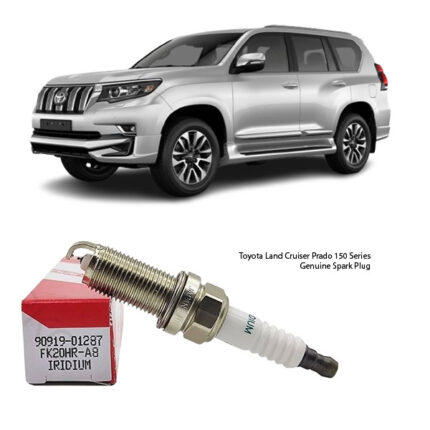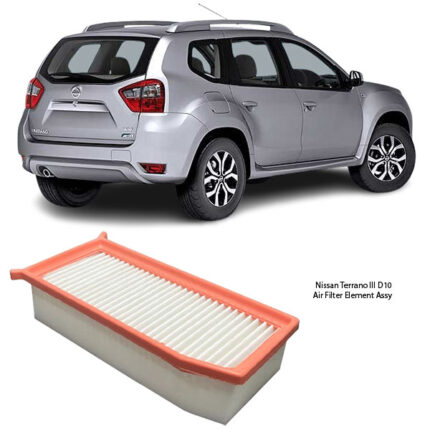Get Mitsubishi Outlander PHEV Top Cover Cylinder Gasket 1035A583 in Kenya
The Genuine Top Cover Gasket Cylinder is a critical sealing component located at the uppermost section of an internal combustion engine. Also referred to as the valve cover gasket or rocker cover gasket, this gasket ensures that the engine remains sealed, oil-tight, and free from contaminants at the point where the valve cover meets the cylinder head.
Although small in size, the top cover gasket plays a vital role in the engine’s overall health and efficiency. A high-quality, genuine gasket offers dependable performance, minimizes the risk of leaks, and ensures your engine operates under optimal conditions.
What is a Top Cover Gasket Cylinder?
The top cover gasket is a molded or cut rubber, silicone, cork, or composite material that sits between the valve cover and the cylinder head. Its primary job is to seal the top portion of the engine, preventing oil from leaking out and foreign particles like dirt, debris, and moisture from entering.
This component is crucial in maintaining lubrication inside the cylinder head, where critical engine parts like the camshafts, rocker arms, and valves operate. It also keeps oil from spilling onto external engine parts, which could lead to overheating or fire risks.
Structure and Material Composition
Genuine top cover gaskets are designed and manufactured to exact specifications for fit and durability. They are engineered to withstand extreme heat, pressure, and prolonged exposure to engine oil.
Key material types include:
-
Rubber: Common for modern engines due to its flexibility and heat resistance.
-
Silicone: Offers excellent durability and high-temperature tolerance.
-
Cork-composite: Often used in older engines; it provides a decent seal but requires careful installation.
-
Multi-layer steel or composite gaskets: Found in performance or heavy-duty applications for enhanced sealing properties.
Genuine gaskets are made to perfectly match the engine head and valve cover profile, which ensures a uniform seal without gaps or over-compression.
Functions and Benefits of a Genuine Top Cover Gasket
1. Prevents Oil Leaks
A proper seal keeps engine oil confined within the valve train area, ensuring consistent lubrication and pressure. This reduces oil consumption and prevents oil from spilling onto the engine block or exhaust manifold.
2. Protects Engine Components
By sealing the engine’s upper section, the gasket keeps dirt, dust, and other debris out of the internal components. This prevents premature wear and maintains smooth engine operation.
3. Maintains Oil Pressure
Any leak at the top of the engine can result in a drop in oil pressure, which compromises lubrication and causes engine damage. A tight seal from a genuine gasket helps retain optimal oil pressure.
4. Reduces Emissions
Oil leaks can cause burning oil odors, smoke, and contribute to higher hydrocarbon emissions. A good gasket helps maintain cleaner engine operation and reduces pollution.
5. Prevents Engine Damage
Oil leaking onto hot engine parts like the exhaust manifold can cause smoke or even fire. A functioning gasket minimizes this risk.
6. Long Service Life
Genuine gaskets are built to last under normal driving conditions, offering reliability across extended maintenance intervals when properly installed.
Symptoms of a Failing Top Cover Gasket
Over time, due to heat cycling, age, or improper torque of the valve cover bolts, a gasket can degrade or shift, leading to several warning signs:
1. Visible Oil Leaks
One of the earliest indicators is oil collecting on the exterior of the engine. This is often seen around the valve cover or dripping onto lower engine components.
2. Burning Oil Smell
If oil leaks from the gasket and drips onto hot surfaces, it may produce a strong burning smell, especially noticeable after the engine has been running for some time.
3. Low Engine Oil Level
A slow, unnoticed leak can lead to a drop in oil levels. Frequent top-ups may indicate a leak at the valve cover.
4. Dirty Engine Surface
An oily residue collecting dirt and dust near the top of the engine can suggest a deteriorating gasket seal.
5. Engine Misfires
In some cases, oil may seep into spark plug wells, affecting ignition and causing misfires or rough running.
6. Check Engine Light
Although not always directly tied to the gasket, issues like misfires or oil contamination in the ignition system can trigger warning lights.
Importance of Using a Genuine Gasket
The quality and compatibility of the gasket are essential. Using a genuine top cover gasket ensures that the material is heat- and oil-resistant, precisely molded, and matches the engine’s specifications.
Why genuine matters:
-
Exact fitment: Prevents leaks from uneven or improper installation.
-
OEM quality control: Meets or exceeds the original engine manufacturer’s standards.
-
Long-term durability: Withstands pressure, thermal expansion, and vibration better than generic alternatives.
-
Warranty protection: Helps maintain warranty coverage for engines or repairs when OEM parts are used.
Installation and Maintenance Tips
1. Proper Cleaning
Before installing a new gasket, ensure the valve cover and cylinder head mating surfaces are clean and free from old gasket material, oil, and debris. A clean surface ensures a proper seal.
2. Correct Torque Settings
Always tighten the valve cover bolts to the recommended torque setting using a torque wrench. Overtightening can crack the cover or deform the gasket; under-tightening may cause leaks.
3. Inspect Valve Cover
A warped or damaged valve cover can prevent proper sealing. Replace or machine the cover if needed before installing a new gasket.
4. Use of Sealant (if required)
Some gaskets require a small amount of RTV sealant at specific points, such as sharp corners. Only apply sealant as recommended by the manufacturer.
5. Regular Checks
During routine maintenance, inspect the valve cover area for signs of oil seepage. Early detection of minor leaks can prevent major issues.
6. Replace When Servicing Top End
If you’re accessing the cylinder head for maintenance or repair, it’s advisable to replace the top cover gasket as part of preventive maintenance.
Follow us on Facebook for more parts.





Reviews
Clear filtersThere are no reviews yet.